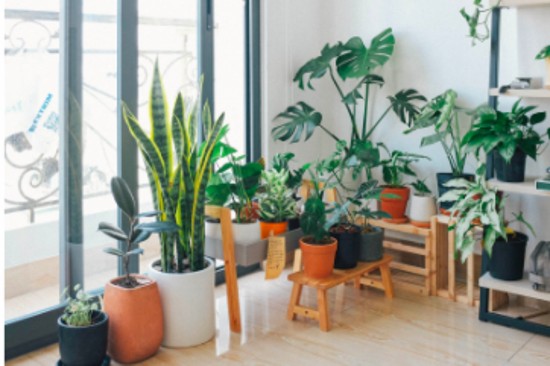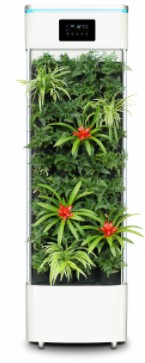Uma Campbell is a freelance writer and yoga instructor from Southern California, and a regular contributor to 21stcentech.com. In this posting she tackles the subject of indoor air quality and the technologies being deployed to tackle its challenges.
In Canada, our Public Health Agency has developed guidelines for indoor ventilation health measures to stop the spread of COVID-19. In addition to social distancing, wearing masks in indoor spaces, good hand and respiratory hygiene, it talks about HEPA (High-Efficiency Particulate Air) filters which it states, when combined with all of the above can prove to be effective infection control measures. I leave you to read Uma’s words, and you can follow Uma on Twitter at @umajcampbell.
Air pollution is a top issue for The World Health Organization which sees it as a human health threat along with the pandemic and climate change.
As a society, we usually hear about the air quality of our outdoor environments and how the incorrect management of waste, industrial processes, energy generation, and other human activities contribute to our health. But what goes on outside (see image below) tends to get to the inside affecting closed environments in the same way or worse, creating long-term repercussions for our health and well-being.
 Why Indoor Air Quality Matters
Why Indoor Air Quality Matters
IAQ stands for Indoor Air Quality a measure of the healthiness of indoor enclosed spaces. Indoors can harbor toxins with direct consequences for our health including headaches, and irritation of the eyes, nose, and throat. That’s why keeping the quality of the air inside our living spaces should be a priority to make sure that airborne pollution does not put us at risk of getting sick.
Common Causes of Indoor Pollution
As well informed as we have become about the causes of outdoor pollution, it’s not clear we have the same level of awareness for indoor spaces which can be contaminated by:
- Household products and items include disinfectants, fresheners, candles, paints, care products, carpets, and synthetics.
- Fireplaces, heaters, open stoves, and ovens.
- Mould, bacteria, dust, and pet dander.
- Tobacco products and smoke.
- And outdoor pollution that gets inside.
Add to this viruses like COVID-19 and we have a recipe for dangerous indoor conditions. Where an airborne virus is less likely to be transmitted in outdoor spaces where its concentrations can be dispersed, inside is a whole different matter.
What To Do To Improve Indoor Air Quality
Indoor air pollution is nothing new. And we have strategies to deploy to combat it. These include:
- Houseplants that help to control airborne pollution by absorbing carbon dioxide and other gasses, and removing threatening microorganisms.
- Vacuuming that reduces indoor airborne and dust on surfaces.
- Increased ventilation that circulates outdoor either through open doors and windows or through Heating, Ventilation and Air Conditioning (HVAC) systems.
- Humidification and dehumidification that keeps indoor moisture at the right levels to eliminate mould, reduce airborne and surface bacteria as well as other airborne particulates.
- Air Purification Systems that filter indoor air to remove pollutants.
 Ongoing Challenges
Ongoing Challenges
Filtering systems capable of removing viruses from indoor air
HVAC filters reduce contaminants found inside closed spaces, including viruses. But to be effective in fighting COVID-19, these filters need to trap 99.9% of particles within a size range of between 0.1-1 micrometres (um).
Filtering systems capable of removing particulate matter
The high-performance air filtering systems that eliminate viruses may also work to capture micron-sized particles responsible for chronic respiratory-related illness and deaths. To find the right type of filter it is important to identify the pollution source and type. HEPA medical-grade air purifiers are the type recommended for removing smoke, pet dander, and other pollutants, the ones most commonly associated with poor indoor air quality.
The Future Of Air Filtration
Where are filtering systems headed in light of ongoing challenges indoor air pollution challenges?
The market continues to grow for indoor filtration systems from annual sales of $13.75 billion in 2021 to $22.15 billion by 2028. It is being fed by our urban existence with the majority of the world’s population now living in cities with bad outside air that comes inside homes, businesses, and apartments. It is unavoidable whether it is smog from the burning of fossil fuels that creates high levels of particulate matter, ground-level ozone from tailpipe emissions, nitrous oxides, methane, or other carbon-based pollutants. That’s why governments at all levels are adopting rigorous environmental standards to deal with these airborne challenges which kill millions annually. And that’s why we may see in the near future filters like the one pictured below (a living filter) that uses organic matter and plants, wool and other naturally absorptive materials to clean indoor air.
Expect to see filters designed to fit into residential and office settings that won’t look like air purifiers, some even doubling as furniture made from absorptive materials. Expect wearable air purifiers as well that may be less conspicuous than the N95 masks recommended today to protect us from COVID-19. And lastly, as in all technological advances these days, expect to see apps for our smartphones that measure indoor air quality and use artificial intelligence algorithms to notify HVAC systems and purifiers to adjust filtration settings based on what is in the air.










